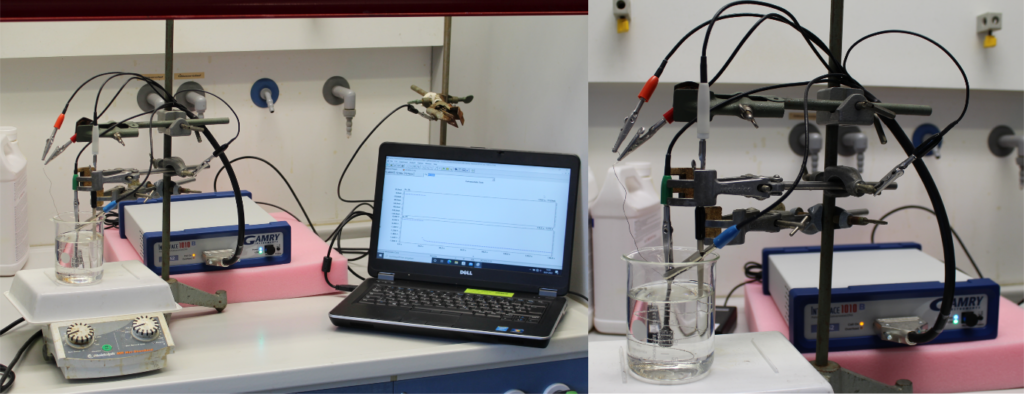Electrolytic hydrogen charging

Electrolytic hydrogen charging is a wet chemical process in which the material to be charged is poled as the cathode. A noble metal, in most cases platinum, is used as the anode. The electrodes are located in an electrolyte to which a hydrogen recombination Inhibitor has been added. If a direct current is now applied, atomic hydrogen is produced at the cathode, which can be absorbed by the material through adsorption and absorption processes. The recombination inhibitor added to the electrolyte effectively prevents atomic hydrogen from combining to form molecular hydrogen. Only in this way is absorption into the material possible. For electrochemical charging, a Gamry Interface 1010B potentiostat/galvanostat is available at WWI. This device allows a permanently constant charging of the materials.
Electrochemical charging is particularly suitable for materials that have a sufficiently high hydrogen diffusion coefficient at room temperature. This method is also characterized by its simplicity and high reproducibility of results. However, this method is not suitable for corrosion-sensitive materials.
Responsible employees:
Oliver Nagel, M. Sc.
Department of Materials Science and Engineering
Chair of General Materials Properties
- Phone number: +49 9131 85-27474
- Email: oliver.nagel@fau.de